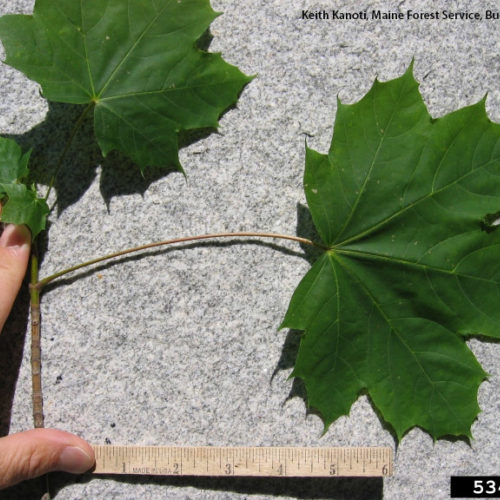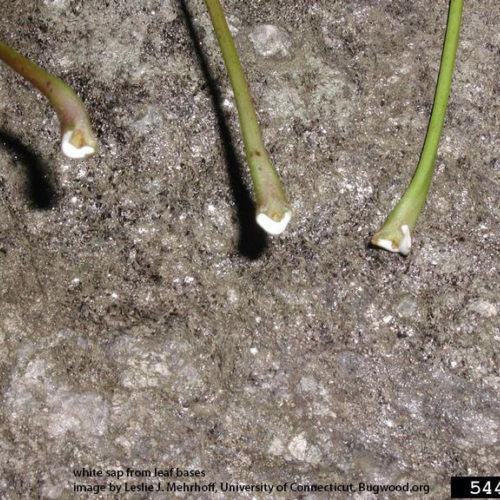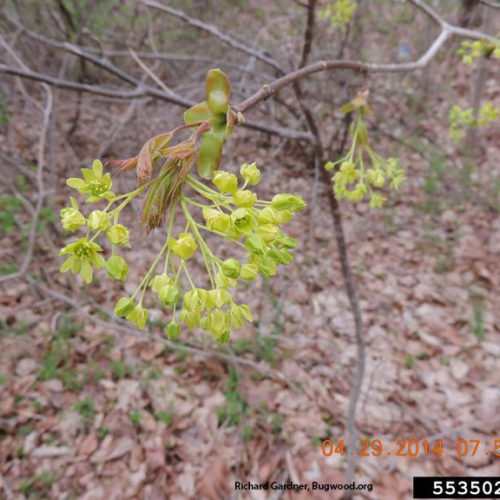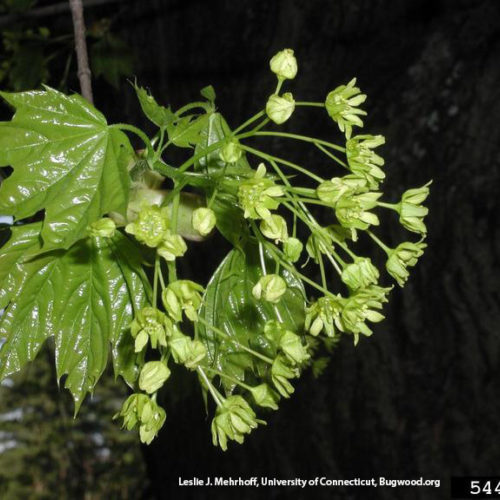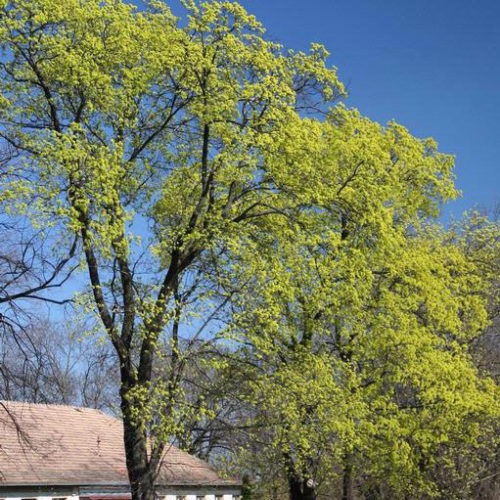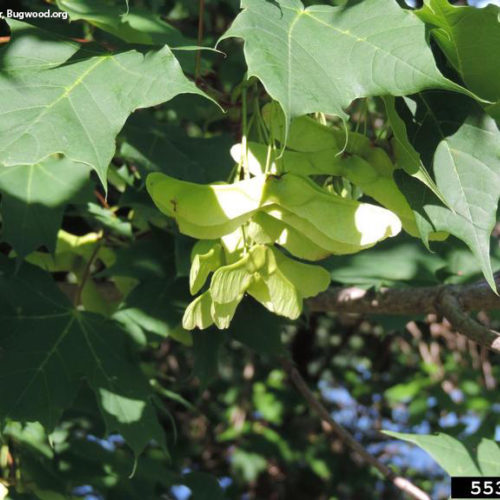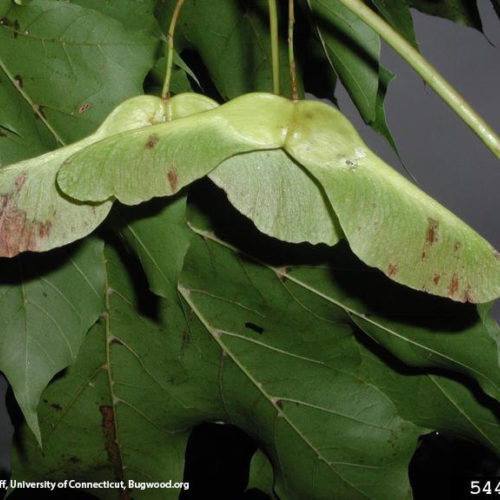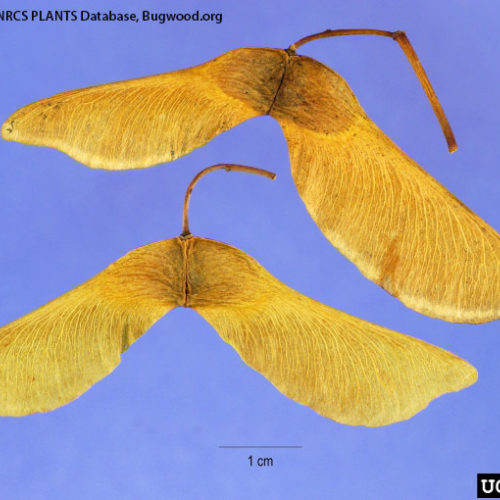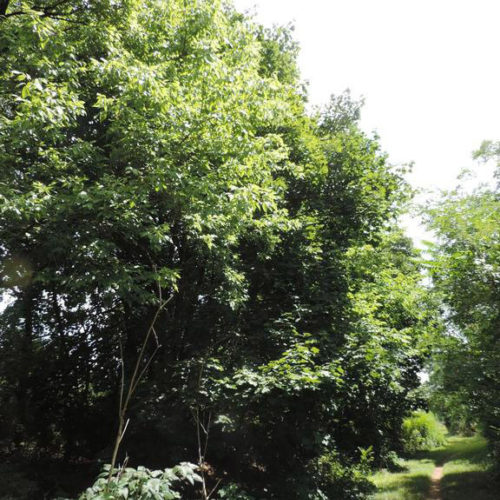Norway Maple
Acer platanoides
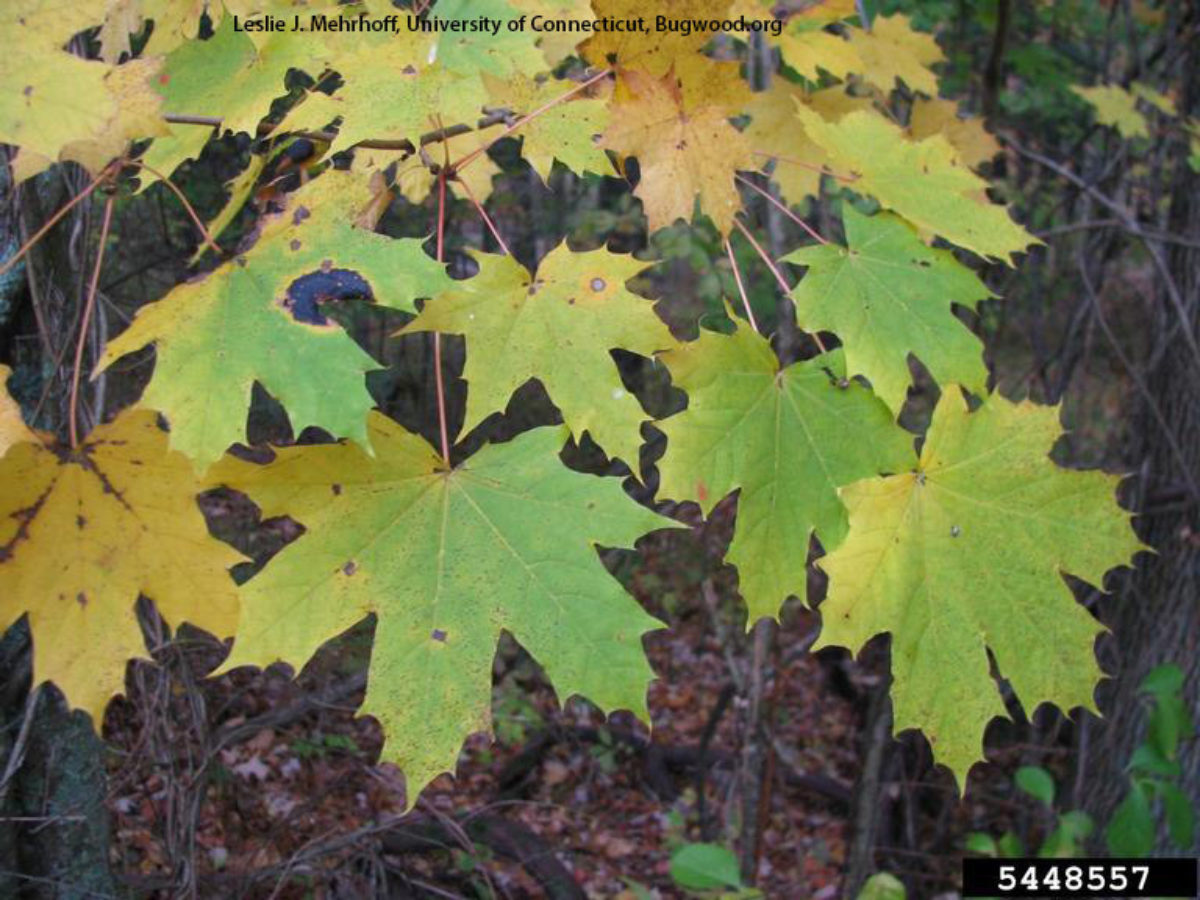
Family: Sapindaceae
Weed class: monitor list
Native to: parts of Asia and Europe
Is this Weed Toxic?:
not known to be
Why Is It a Noxious Weed?
This plant is on the monitor list - it is not a listed noxious weed in Washington. Please contact the Noxious Weed Control Board to report locations of plants growing outside of ornamental plantings.
How would I identify it?
General Description
Norway maples are tall deciduous trees, growing up to 40-60+ feet tall with broad crowns. Large maple-shaped leaves are opposite each other on the stem and deciduous. Small yellow flowers bloom in the early spring and form samaras, with wings nearly at a 180 degree angle. It and its cultivars have been widely planted as a landscape tree throughout the United States. Over time it has spread and become a notable invader in the eastern US.
Flower Description
Small yellow flowers occur in clusters (corymbs) that bloom in early spring before or as the leaves emerge.
Leaf description
opposite
Stem description
Norway maple's bark is smooth on younger trees and ages to have ridges and furrows.
Fruit Seed Description
The dry fruit (samara) is of two sections, each with a seed that has a papery wing. The section with the seeds are connected at their bases and are hairless. The wings are in a wide angle from each other or sometimes almost horizontal.
May Be Confused With
Norway maple may be confused with sugar maple (Acer saccharum), see a comparison image here.
Where does it grow?
These trees are adapted to grow in a variety of light and soil conditions, including poor soils and hot, dry conditions.
How Does it Reproduce?
Norway maple spreads by seed. Seeds are wind dispersed.
How Do I Control It?
While small plants can be pulled or dug out, larger plants will need an herbicide treatment to prevent re-sprouting.
For More Information
Norway maple information on Invasive.org
UW Herbarium image database information on Norway maple



